Cloud services are remote computing solutions that back up files and data for businesses.
Mornex has engaged in creating distinctive cloud solutions that enable businesses to increase productivity and transition to a new, user-friendly technology ecosystem.
This is accomplished by utilizing top-notch tools, assembling a knowledgeable staff, and offering unwaveringly superior support.
The cloud infrastructure from Microsoft gives businesses versatility, data protection, procedure consistency, and the freedom to operate from any place at any time. By using Microsoft Azure, you can save funds for other company needs while lowering the expense of buying new technology and monitoring and sustaining your IT infrastructure. You can keep your comparative edge without raising your operating costs by migrating your company to the cloud.
Azure: What is it?
At its centre, Azure is a framework for public cloud computing that offers Infrastructure as a Service (IaaS), Platform as a Service (PaaS), and Software as a Service (SaaS) workarounds. These options can be used for a variety of offerings, such as data analysis, simulated computer technology, backup, connectivity, and far more. Your on-premises servers can be supplemented or replaced with it.
How to put it to work
-
Improve and put backup and disaster recovery in place
Azure is the ideal solution for backup and disaster restoration. Why? Since of its adaptability, cutting-edge site rehabilitation, and integrated design.
Azure’s inherent flexibility as a cloud-based service allows it to back up your information in practically any language, on any OS, and from any place. The regularity and scope of your restoration plan are also determined by you.
Although disk backup has its uses, it is not a comprehensive backup and catastrophe restoration option. With little local administration, up to 99 years of information preservation, little to no initial outlay, and low operating expenses, Azure onsite restoration can improve your tape backup. You won’t ever have to concern about database loss thanks to Azure backup, which keeps three duplicates of your information in the database centre’s data centre and another three backups in a secondary Azure data centre.
-
Run and create web and smartphone applications
With security patches, Auto Scale, and connectivity for on-premises applications, Azure gives online and smartphone applications the autonomy and adaptability you need for serving, creating, or administering them.
You can concentrate on making improvements to your applications rather than maintaining your network when you use automatic updates and patches for your virtual servers. You can simplify continuing code modifications using Azure’s functionality for system implementation.
With the help of the Auto Scale functionality in Azure Web Applications, you may have the capabilities you require when internet traffic is heavy and spend less money when you are not operating at peak hours.
You may effortlessly connect your web application to an on-premises app using Azure. Workers and associates can safely access assets within your firewall that are normally hard to access from outside by linking applications in both places.
-
Make Active Directory available and complete it
Your DNS will have a worldwide range, centralised administration, and strong protection thanks to Azure’s ability to interface with your Active Directory and enhance your authentication and accessibility features.
An Active Directory system that supports straight connection can be distributed worldwide using Azure. Azure is the only cloud hosting with the capacity to expand the range of your DNS server and streamline AD administration.
The Active Directory interface with Azure will be the major solution for controlling and preserving accessibility to all of these technologies if you have several sites, use on-premises or cloud applications, like Microsoft 365.
You can also use multi-factor verification with Azure to further secure your files and apps while minimising user friction. For cloud applications running on Windows, Mac, Android, and iOS, single sign-on is also simple to deploy.
-
Create new IoT business solutions
Microsoft Azure is the ideal tool for businesses pursuing IoT technologies due to its growth, adaptability, and safety. Systems that integrate with your current network allow you to link your assets to the cloud and begin gathering fresh information about your business.
You can control and evaluate millions of computers within the Azure IoT Hub and obtain information to assist you in making smarter company choices, enhancing consumer interactions, reducing bureaucracy, lowering costs, and hastening innovation.
IoT systems, which frequently have safety flaws that criminals might exploit, greatly benefit from Azure’s increased protection. Remote surveillance, preventative repair, and analysis are further advantages.
Why Choose Azure?
You might be intrigued in investigating Azure’s numerous uses now that you are more knowledgeable about it and the resources it offers.
App growth: Azure allows you to build any type of web app.
Evaluating: You can evaluate an app after properly creating it on the system.
Running an app: After testing is complete, Azure can assist with hosting the apps.
Construct virtual workstations: With the aid of Azure, you can build virtualized workstations in whatever arrangement you desire.
Facilities for integrating and syncing virtual endpoints and folders are available through Azure.
Measurements collection and storage are made possible by Azure, which can aid in the discovery of successful strategies.
Virtual hard drives, which are just virtual machines with more storage capacity, are used.
Ending
Microsoft Azure is without a question the cloud – based system that organizations are utilizing at the rapid speed, offering more than 200 solutions and a host of advantages.
Numerous chances are opening up for experts in this area as a result of the expansion in the use of Azure by enterprises.
For more information about our Azure cloud solutions contact us today >>
FAQ’S
What year did Azure debut?
Microsoft Azure, first introduced as Project Red Dog in 2008, has developed into a significant cloud computing provider. In 2021, Azure held a 20% share of the market, while AWS held a 31% share and Google Cloud Platform (GCP) held a 9% share.
How does Azure function?
A cloud computing system is Microsoft Azure. Equipment, facilities, and assets in computer servers are managed and maintained by Azure. Companies and institutions can obtain these resources via the web for nothing or on a pay-per-use subscription. This enables Azure’s customers to access sophisticated, sometimes cost-prohibitive gear and services without a hefty initial outlay.
What purposes serves Azure?
Infrastructure as a Service (IaaS), Platform as a Service (PaaS), Software as a Service (SaaS), and cloud computing are all examples of Cloud solutions. Data, connectivity, computing, and analysis are just a few of the uses for these cloud computing.
Why is Azure necessary?
Microsoft Azure enables individuals and organizations to develop, deploy, and operate apps throughout a variety of clouds and on-premises data centres while resolving a wide range of technological issues.









